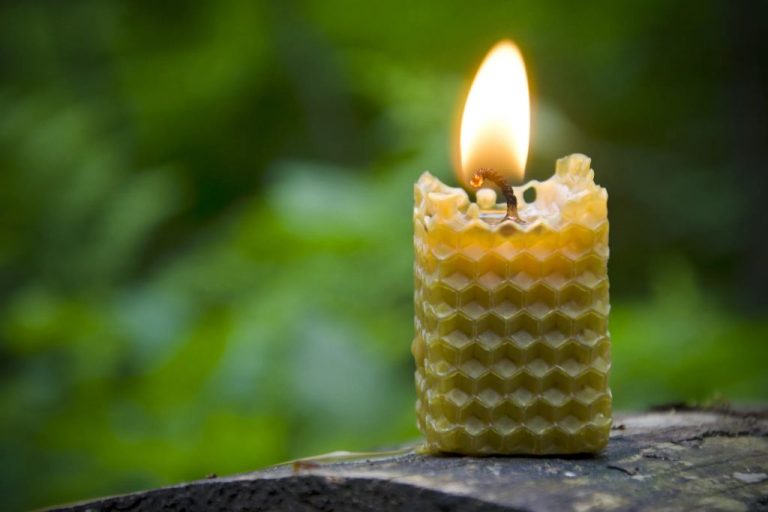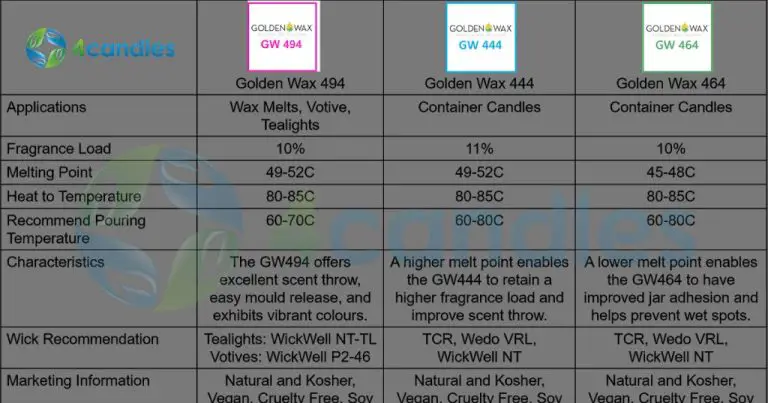What’S The Best Oil To Use For Wax Melts?
What are wax melts?
Wax melts, also known as wax tarts, are small pieces of scented wax that are melted to release fragrance into the air. They are a popular alternative to scented candles because they do not require a wick or flame to operate.
Once melted, wax melts release aroma through evaporation of the oils in the wax. They are designed to melt at low temperatures, usually between 120-140°F, so they can be safely melted in electric wax warmers (link to wax warmer products on Amazon). The wax itself is typically made from soy, paraffin, palm, coconut, or beeswax.https://www.grandviewresearch.com/industry-analysis/wax-melts-market
Wax melts have surged in popularity in recent years as a safer alternative to burning candles, especially in homes with children or pets. They allow users to enjoy the scent benefits of candles without an open flame. The global wax melts market was valued at $3.47 billion in 2023 and is projected to grow at a CAGR of 6.1% from 2024-2030.https://www.databridgemarketresearch.com/reports/global-wax-melts-market
Unlike candles which continuously burn, wax melts allow users to control when and how strong they want a scent. The wax can be melted again and again until fully used up. Wax melts come in a huge variety of scents from floral to baked goods to seasonal specialties.
Factors to consider when choosing wax melt oils
There are several key factors to take into account when selecting the best oil for wax melts:
Type of wax used – The wax you choose as your base will impact the performance of the fragrance oil. Common options include paraffin, soy, coconut, palm, and beeswax. Paraffin wax holds fragrance oils well but can be messy when melting. Soy wax requires more fragrance oil but is a clean-burning option. Coconut wax also needs a higher fragrance load but offers excellent scent throw. According to this article, blends of different waxes can optimize benefits.
Fragrance load – The amount of fragrance oil you add to the wax will affect scent intensity. A typical fragrance load is 6-8% of the wax weight, but some waxes require 10% or more. Too little fragrance and the melt won’t smell strong enough. Too much can cause the wax to sweat or become discolored. Testing different percentages is recommended.
Intended use – Consider when and where the wax melts will be used. Stronger scents like citrus or pine work best for morning energy. Florals or vanilla are relaxing for evening. You may want lighter or natural scents for small spaces like bathrooms.
Cost – Natural waxes and fragrance oils are generally more expensive. Paraffin and synthetic fragrances are budget-friendly options. Factor in how much you want to invest when choosing your wax melt ingredients.
Most Common Oils Used
There are five main types of oils commonly used to make wax melts:
Paraffin Wax
Paraffin wax is a petroleum byproduct made from crude oil refining. It’s colorless, odorless, and inexpensive. Paraffin wax melts are long-lasting and have a high fragrance load. However, paraffin isn’t a natural product and can produce more soot.
Soy Wax
Soy wax is made from hydrogenated soybean oil. It’s a renewable and natural wax. Soy wax melts cleaner than paraffin and are also biodegradable. However, soy wax is softer and doesn’t retain fragrance as long as paraffin.
Coconut Wax
Coconut wax comes from coconut oil. It’s natural, eco-friendly, and cleanly burning. Coconut wax holds fragrance well and produces a smooth melt pool. But it can be brittle and prone to cracking.
Palm Wax
Palm wax is derived from palm oil. It’s 100% natural and makes hard, long-lasting melts. But there are sustainability concerns around palm oil production. It also doesn’t hold scent as strongly as other waxes.
Beeswax
Beeswax is produced by honey bees. It’s hypoallergenic and pure. But beeswax is expensive and has a low melting point. It also doesn’t hold scent well on its own.
Pros and Cons of Paraffin Wax
Paraffin wax is derived from petroleum and is the most commonly used wax for wax melts. Here are some of the main pros and cons of using paraffin wax:
Pros:
-
Cheap – Paraffin wax is very affordable, especially compared to natural waxes like soy or beeswax. The low cost makes it economically feasible for high volume production.
-
Excellent scent throw – The molecular structure of paraffin wax allows fragrance oils to be strongly absorbed and dispersed. Paraffin wax melts are known for having excellent hot and cold scent throw.

Cons:
-
Non-renewable resource – Paraffin wax is derived from petroleum, so it relies on fossil fuels. This makes it less sustainable than natural wax alternatives.
While paraffin wax has some drawbacks in terms of sustainability, its low cost and strong scent throw make it a popular choice for wax melt production. Its availability and performance help offset concerns about relying on non-renewable petroleum-based resources.
Pros and cons of soy wax
Some key pros of soy wax are that it is natural, renewable, and biodegradable. Since soy wax is made from soybean oil, it comes from a sustainable and renewable resource, unlike paraffin wax which is a petroleum byproduct. This makes soy wax more environmentally friendly. Soy wax is also biodegradable, meaning it will break down in the environment over time without causing harm.
A potential downside to soy wax is that it may not have as strong of scent throw compared to paraffin wax. Some research shows soy wax candles tend to have a lighter scent than paraffin candles when using the same fragrance oils. This is because the natural soy wax doesn’t hold fragrances as strongly. However, this can be mitigated by using higher concentrations of fragrance.
Pros and cons of coconut wax
Coconut wax is made from the oils of coconuts and is a popular natural wax option for wax melts. Some of the pros of using coconut wax include:
- It’s a natural product made from coconuts so it’s renewable and sustainable.
- It has excellent scent throw so fragrances are strong and last a long time.
- It has a high melting point of around 76-82°F so melts hold their shape.
Some potential cons of coconut wax are:
- It can be brittle and prone to cracking or crumbling.
- It’s not as smooth or glossy in appearance as paraffin wax.
- It’s more expensive than paraffin wax.
Overall, coconut wax is a good natural option for homemade wax melts. It’s safe, renewable, and makes melts that retain scents well. Just be prepared to handle the brittleness and higher price compared to paraffin wax (source).
Pros and cons of palm wax
Palm wax has become popular for making wax melts and candles because it is a natural wax that comes from the fruit of palm trees. Some key pros of using palm wax are:
- It provides a clean, natural burn – According to this source, palm wax burns cleanly without producing soot or smoke.
- It can be sustainable if sourced ethically – Palm wax is a renewable resource that can be harvested sustainably if proper practices are followed, as noted in this article.
- It holds fragrance well – Palm wax disperses and retains fragrances evenly, providing consistent scent throw according to this overview.
Some potential cons to consider are:
- Environmental concerns with unsustainable production – Irresponsible farming practices associated with palm oil have led to deforestation, as explained by this source. Care should be taken to source palm wax sustainably.
- Higher cost than other waxes – Palm wax tends to be more expensive than paraffin or soy waxes, which can drive up production costs.
Overall, palm wax can be a good choice for clean burning and fragrant wax melts when sourced ethically. But costs and environmental impacts should be evaluated.
Pros and cons of beeswax
Beeswax is a popular natural wax made by honey bees. Here are some of the main pros and cons of using beeswax for wax melts:
Pros:
- Natural and non-toxic – Beeswax is an all-natural wax that is non-toxic and environmentally friendly. It does not release harmful chemicals when melted (1).
- Longer burn time – The high melting point of beeswax allows candles and wax melts made from it to burn longer than other waxes (2).
- Pleasant honey scent – Beeswax has a light, sweet, honey-like aroma when melted.
Cons:
- Expensive – Beeswax is much more expensive than synthetic waxes like paraffin due to the effort required to produce it. This makes beeswax products more costly (3).
- Low scent throw – The natural scent of beeswax can overpower scented oils, resulting in a lower scent throw unless blended with other waxes (4).
Overall, beeswax is a high-quality natural wax option for wax melts despite being more costly. Many people appreciate its natural origins and minimal scent profile. However, the price and low scent throw may be disadvantages for some.
Sources:
(1) https://www.greenerlyfe.com/blog/pros-and-cons-of-beeswax-candles-we-review-the-facts/
(2) https://www.thefarmerscupboard.com/blogs/bees-honey/pros-and-cons-of-beeswax-candles
Blends and additives
One way to get the best properties of different wax types is to blend them together. This allows the wax melter to customize the melt point, scent throw, and other characteristics. Some popular wax blend options include:
Mixing soy wax with paraffin wax. The soy wax helps increase scent throw and makes a cleaner burn, while the paraffin provides a smooth texture and reasonable cost. A typical ratio is 60% soy wax with 40% paraffin wax. Refer to this soy-paraffin blend from Candle-lite Company for an example: https://www.candle-lite.com/collections/wax-melt-blends.
Adding coconut wax to soy wax. Coconut wax helps increase scent throw even more than soy wax alone. A blend of 80% soy wax and 20% coconut wax makes for excellent scent throw. The soy still provides a smooth appearance. Just be careful not to add too much coconut oil or the texture may become too brittle.
Incorporating beeswax for natural fragrance. A bit of beeswax combined with soy wax generates a pleasant honey-like scent while also holding fragrance oils well. Since beeswax has a high melt point, limit to 10-15% of the wax blend.
Wax melters can experiment with different wax blend ratios to find their ideal combination of scent throw, appearance, burn quality, and cost. When trying a new blend, test in small batches first.
Recommendations for best wax melt oils
When choosing the best wax melt oil, it depends on your priorities and intended use. Here are some recommendations based on common needs:
For cleanest burn and scent throw: Beeswax and soy wax blends are best. The natural waxes produce less soot and maximize fragrance diffusion. A popular blend is 60% soy wax with 40% beeswax.[1]
For affordability: Paraffin wax is the most budget-friendly option. It has a high melting point to extend burn times. Blend with a small amount of vybar or stearic acid to harden the wax.
For ease of use: Soy wax melts fastest and easily releases scent. It’s beginner-friendly if you want to make wax melts at home. Avoid blends that use more than 20% coconut oil, which can solidify soy wax too much.
For environmentally-friendly: Look for organic soy wax or beeswax. These natural waxes are biodegradable and renewable. Make sure any palm wax is sustainably sourced.
For strongest scent hold: Palm wax, beeswax, and soy wax hold fragrance oils the best. Paraffin wax may need a higher fragrance load since it absorbs oils less effectively.
For longest burn time: Paraffin, palm, and beeswax have the highest melting points. Soy wax and coconut wax burn quicker. Use wax melt tarts or tea light holders to fully pool wax and extend burn times.




